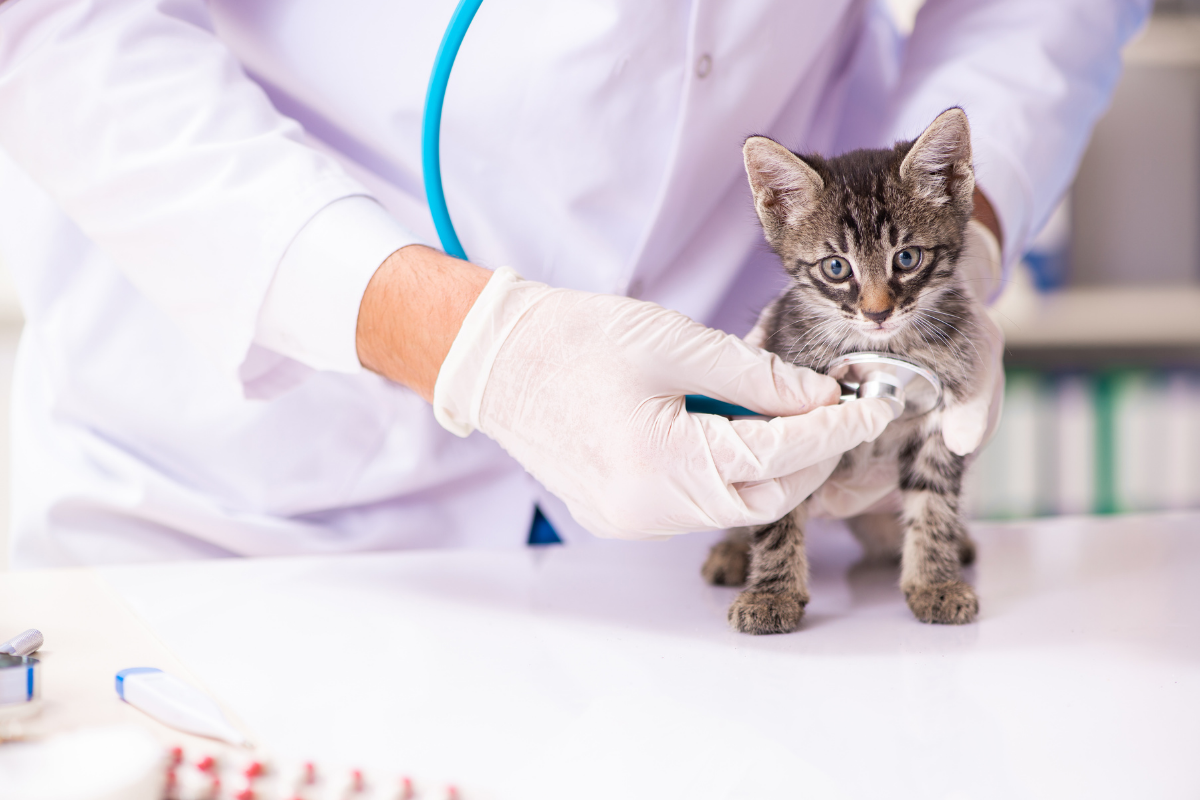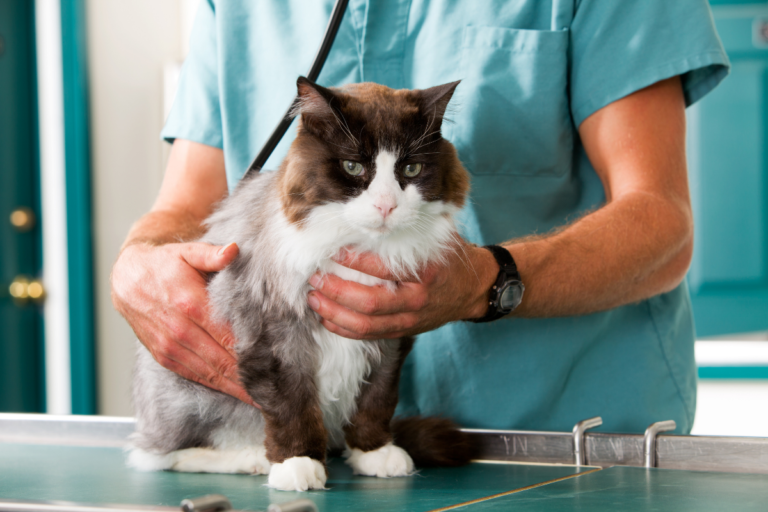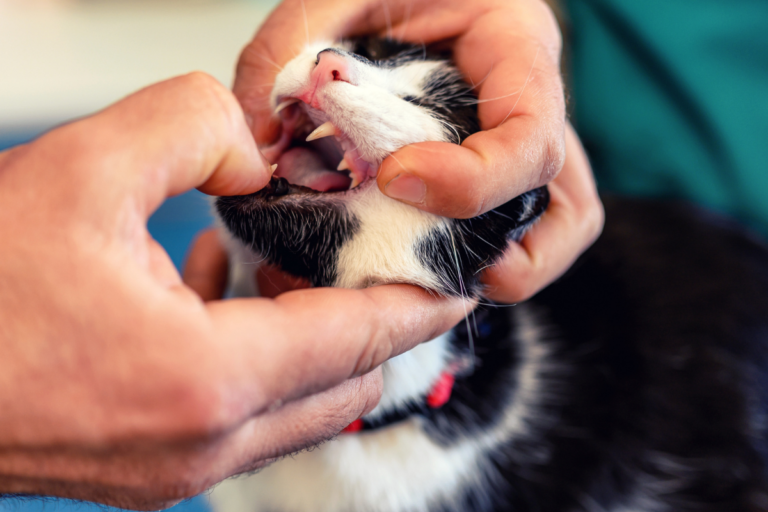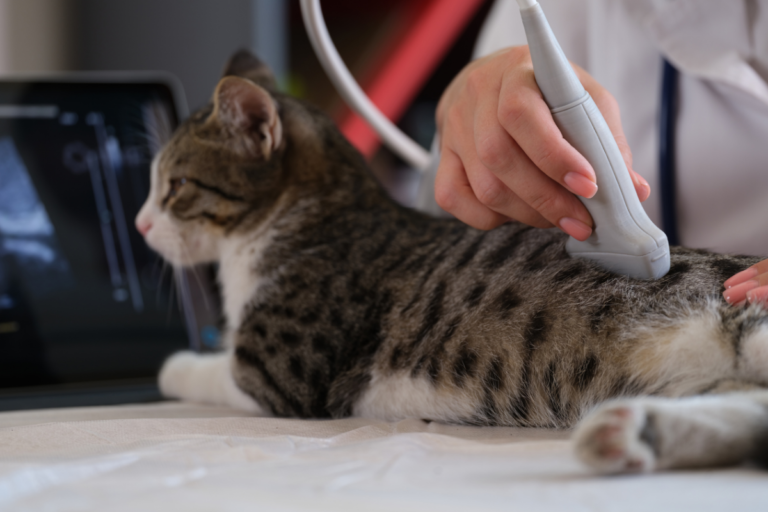Paws and Heartbeats: Unveiling Cats Heart Health
Understanding Cat Heart Health
Keeping our furry buddies in tip-top condition means knowing a bit about their health, and heart health is at the heart of that! Let’s get to know a cat’s ticker and the heart problems that might come knocking.
Anatomy of a Cat’s Heart
A cat’s heart—it’s a remarkable little engine. Nestled snug in the chest, it’s made of four cavities, called chambers: the atria on top and the ventricles below. The upper ones, the atria, pull in blood returning from all over—from the body (right atrium) and the lungs (left atrium). Down below, the ventricles have the heavy-lifting duties—sending blood off to the lungs (right ventricle) and the rest of the body (left ventricle).
| Heart Part | Job |
|---|---|
| Right Atrium | Takes in low-oxygen blood from the body |
| Right Ventricle | Sends blood to the lungs for a breath of fresh oxygen |
| Left Atrium | Gets fresh oxygen-rich blood from the lungs |
| Left Ventricle | Shoots the oxygen-rich blood around the body |
Need more info on what’s happening in your kitty’s mouth? Check out our guide on cat gum disease.
Common Feline Heart Diseases
Cats face heart troubles just like us. They can come at birth or creep in as they age.
Congenital Heart Disease:
This kind, present from kitty cradle days, could be due to how they developed or their genes. It might include things like holes between heart chambers (ventricular septal defects) or ductus issues.
Adult-Onset Heart Disease:
This sneaks up as cats get older, often because of wear-and-tear on their heart.
Top of the list for cat heart woes is Hypertrophic Cardiomyopathy (HCM). Here, the heart muscle thickens up, making its pumping job quite the workout. Cats might keep it under wraps till things get serious, but if you notice them being a bit more of a recluse or catching extra catnaps, it’s time to pay attention.
| Heart Trouble | What It Means |
|---|---|
| Hypertrophic Cardiomyopathy (HCM) | Thickening heart muscle |
| Dilated Cardiomyopathy (DCM) | Heart muscle gets thin and weak |
| Arrhythmogenic Right Ventricular Cardiomyopathy (ARVC) | Right ventricle muscle turns to fat/scar tissue |
Being clued in on symptoms like less energy, new hidey spots, or snooze changes is spot on for early detection and help. Curious about more kitty health clues? Look into possible cat liver issues.
Staying alert to your cat’s heart health can mean more purrs for longer. Regular vet visits and keeping an eye on their antics could make the difference in catching something early. Think there’s a problem? Get to a vet, no delay. And for a bigger picture of feline health, including tips on spotting worms in cats, dive into our detailed guides.
Symptoms and Diagnosis
Recognizing Heart Disease in Cats
Knowing the signs of heart disease in our feline pals is super important for spotting it early and keeping it managed. While some of our whiskered friends might not act any different until it’s late in the game, here’s what to keep an eye on:
- Breathing Weirdness: You know that huffing and puffing they do after a chase? If it’s happening while they’re lazing around, it’s a red flag (PetMD).
- Acting Strange: If your kitty’s hiding more than normal or snoozing all day under the bed, something might be up (VCA Hospitals).
- Heart Noises: When the vet listens and hears a beat march out of order, it might mean trouble (PetMD).
- Belly Bloatedness: Their tum might expand if fluid builds up.
- Cold Paws: If those fluffy mittens or the snoot’s cooler than usual, that’s suspicious.
- Easily Pooped Out: Your cat done after a leisurely stroll? That’s no bueno.
- Toppling Over: If they’re suddenly going limp like a noodle or faint, take notice.
- Back Legs Not Working: Blood clots can mess with their rear end.
- Pale Gums: Whiter or bluish gums could mean poor air supply (PetMD).
| Symptom | Description |
|---|---|
| Breathing weirdness | Panting, labored breathing, rapid breaths |
| Acting strange | Withdrawing, hiding, more sleeping |
| Heart noises | Irregular beat, murmurs |
| Belly bloatedness | Abdomen swelling |
| Cold paws | Ears, paws, and tail colder |
| Easily pooped out | Quick fatigue |
| Toppling over | Fainting all of a sudden |
| Back legs not working | Paralysis from blood clots |
| Pale gums | Oxygen and circulation issues |
Regular trips to the vet are a must for catching heart issues early. Dig deeper into cat illness and similar conditions.
Diagnostic Tools for Heart Conditions
The vet’s bag of tricks includes many tools to figure out your cat’s heart troubles:
- Checkups: An up-close vet look can point out funny heart pauses or stutter-starts (PetMD).
- X-rays: Just like on TV, but they’ll be looking for a ballooning heart or chest puddles.
- Heart Graphs (ECG): What’s the rhythm? This tests the beat pattern.
- Heart TV (Echocardiogram): An ultrasound showing the heart working in real-time.
- Blood Samples: See how kitty’s doing overall and check heart-related stuff.
- Pressure Check: High-blood getting kitty down?
- Special Protein Tests: Checks proteins or enzymes that mean heart stress.
- Heart Catheter: A deep dive to see what’s ticking and what’s not.
| Diagnostic Tool | Purpose |
|---|---|
| Checkups | Find heart sound oddities, breathing issues |
| X-rays | Spot big heart or chest fluid |
| Heart graphs (ECG) | See heart’s electric cues |
| Heart TV (Echocardiogram) | Heart’s shape and spin |
| Blood samples | General health and heart markers |
| Pressure check | Watch out for blood pressure |
| Special protein tests | Heart stress indicators |
| Heart catheter | Detailed heart check |
Knowing these tools helps us give our cats top-tier care. For more on kitty health, check out our articles on cat liver problems, cats dental disease, and cat diabetic.
Types of Feline Heart Diseases
Alright, folks, let’s chat about the heart—specifically, our whiskered pals’ tickers. Knowing the types of heart defects that could give our cats some grief helps us keep them purring. We’ll break down three common heart hiccups: Hypertrophic Cardiomyopathy (HCM), Dilated Cardiomyopathy (DCM), and Arrhythmogenic Right Ventricular Cardiomyopathy (ARVC).
Hypertrophic Cardiomyopathy (HCM)
When it comes to feline heart troubles, HCM’s the big kahuna. Basically, it’s when the muscle walls of the left side of a cat’s heart are beefier than they should be, which can mess with blood flow and cause little jams. Keep an eye out for this one—it’s a sneaky issue that can have some nasty surprises if not caught early.
Look for these tell-tales:
- Weird heartbeats
- Suddenly hitting the floor
- Breathing a bit odd
- Weak pulses
- Legs giving out cause of clots
Swing by our guide on heart issues in cats for more info on spotting these signs.
Dilated Cardiomyopathy (DCM)
Though not as frequent, DCM deserves a spot on your radar. It’s usually linked to lacking enough taurine—an amino acid cats need—resulting in heart chambers pretending to be a spacious studio apartment: wide, with wafer-thin walls. This makes their heart huff and puff, sometimes straight to failure.
Keep an eye on ’em for:
- Always wiped out
- Trouble breathing
- Just plain sluggish
- Skipping meals
Feeding them the right stuff is key—support your furball’s health by learning about dietary considerations and ensuring they get all the taurine they need.
Arrhythmogenic Right Ventricular Cardiomyopathy (ARVC)
ARVC likes to lurk quietly until it’s too loud to ignore. It messes with the heart’s rhythm by making the right side of the heart all floppy with thin walls. Cue right-sided heart mayhem when you least expect it.
Watch for:
- Skipping a beat (literally)
- Feeling feeble
- Gasping for air
- Guts swelling like a water balloon from fluid
Check out the lowdown on how these heart freakouts compare:
| Disease | Ventricular Impact | Wall Texture | Common Symptoms |
|---|---|---|---|
| HCM | Left Ventricle | Beefy thick | Funky heart sounds, sudden flops, breath shifts |
| DCM | All Chambers | Paper-thin | Zonked out, breath struggles, no oomph |
| ARVC | Right Ventricle | Wafer-thin | Bizarre heartbeats, wobbly paws, belly swells |
To keep our whiskered buddies in top shape, it pays to know these conditions and be all eagle-eyed on symptoms. Regular vet visits go a long way, as well as checking for issues like heartworm. For more kitty-care tips, hop over to our pieces on cat disease, cat gum disease, and healthy cat weight.
Treatment and Management
When we think about keeping our cats’ tickers in tip-top shape, knowing the ins and outs of meds and munchies can seriously make a difference. Here’s the scoop on what pills and food tweaks can boost the lives of kitties with heart concerns.
Medications for Heart Disease
There’s a lineup of meds often handed out to tackle heart issues in cats. Each of these goodies plays its own role in propping up heart health and keeping the symptoms at bay.
- ACE Inhibitors:
- These help loosen blood vessels and lighten up the heart’s workload.
- Anticoagulants:
- Say goodbye to pesky clots, keeping thromboembolism risks low.
- Beta Blockers:
- They slow down the heart and lower the blood pressure.
- Diuretics:
- Help kick out extra fluid, stopping the lungs from feeling like a water balloon.
If you’re itching for a deeper dive into feline heart stuff, pop over to our section on heart issues in cats.
| Medication | Function | Examples |
|---|---|---|
| ACE Inhibitors | Chill out blood vessels | Enalapril, Benazepril |
| Anticoagulants | Ward off clots | Warfarin, Clopidogrel |
| Beta Blockers | Hit the brakes on heart rate | Atenolol, Propranolol |
| Diuretics | Flush out extra fluid | Furosemide, Spironolactone |
(Source: PetMD)
Dietary Considerations for Cats with Heart Disease
What goes in the dish is huge for managing heart matters in cats. Some solid nutrition keeps the heart happy and the whiskers wiggling.
- Maintain Normal Body Weight:
- Keeping cats lean and mean is key. Packing on the pounds can really stress out their heart and bring on extra headaches. Check out the healthy cat weight guide.
- Taurine:
- This must-have amino acid is a heart’s best buddy. Getting enough keeps those tickers beating smoothly (VetriScience).
- L-Carnitine:
- It pitches in to use fat for energy, backing up heart rhythm and keeping tabs on cholesterol and triglycerides (VetriScience).
| Dietary Component | Importance | Sources |
|---|---|---|
| Taurine | Heart’s must-have fuel | Meat, Taurine capsules |
| L-Carnitine | Heart energy and rhythm booster | Meat, L-Carnitine supplements |
For other diet pointers, wander through our piece on senior cat weight loss.
Getting these meds and diet changes right can do wonders for keeping heart disease in check for our furry pals. Always huddle with your vet to whip up the perfect game plan for your kitty.
Prevention and Wellness
Keeping our furry pals’ hearts ticking like a charm is the goal. With a little planning and good habits, we can give their hearts a boost and make them bounce with health. So, let’s chat about ditching those nasty heartworms and keeping Kitty’s ticker in tip-top shape.
Importance of Heartworm Prevention
Heartworm disease? Yeah, it’s a nasty thing. While cats aren’t usually the poster kids for heartworm, they can still be hit hard by it. Even tiny heartworms might throw a wrench in the works, messing with their breathing and causing all sorts of trouble (Kingstowne Cat Clinic).
A little pill or dab of magic potion each month can keep heartworms at bay. These wonders tackle the larvae, stopping them in their tracks before they grow up to be big, bad worms. And don’t forget, a quick trip to the vet and heartworm check-ups can catch problems early. Need more info? Hop over to heart issues in cats.
Tips for Maintaining a Healthy Heart
Keeping your feline friend’s heart beating strong ain’t rocket science. Here’s how:
- Balanced Diet:
- Feed your cat a well-rounded diet; it’s like giving his heart a hug. Chatting with the vet about the right menu for your furball isn’t a bad idea.
- Check our guide on healthy cat weight.
- Regular Exercise:
- Get your cat movin’ with toys and playtime. A romp around the house can keep that heart pumpin’ strong.
- Routine Check-ups:
- Regular vet visits to screen for heart health can nip issues in the bud. Keeping tabs on blood pressure and the heart’s rhythm is just smart.
- Weight Management:
- A chunky cat can have a tough time with heart health. Keeping an eye on portions and playing fun games helps manage the waistline. More on this in our piece on over weight cat.
- Dental Hygiene:
- The mouth-heart connection is real. Cleaner teeth can mean a healthier heart. Regular brushing and dental visits are more than a perk—they’re a must. Dive into the details at cats dental disease.
By weaving these heart-smart habits into everyday life, we might just give our cats the best chance of skipping heart disease and living their best lives. Want more nuggets of wisdom? Peek into cat disease for more thoughts and advice!
Comparative Cardiac Insights
Contrasting Feline and Human Hearts
When we peek into the hearts of cats and humans, there’s quite a bit to learn about both! While they both have a four-chamber heart setup—two atria up top pulling in the blood and two ventricles pushing it out—the real story is in the details. Our furry friends and us humans have a bit of a cardiac dance that shows just how different, yet similar, we truly are (Coast to Coast Cardiology).
Here’s the lowdown on what makes feline tickers different from ours:
-
Heart Muscle (Myocardium): Cats have a thinner myocardium with a stretchier right ventricle, perfect for those ninja-like sprints when a toy mouse suddenly appears. Humans, on the other hand, have beefier heart muscles designed for tasks that require more stamina, like running marathons or chasing kids around the park all day.
-
Heart Weight and Beat: When it comes to heart size, cats pack a punch with a heart weighing between 20 to 30 grams—tiny compared to our 300-gram version. Their small but mighty hearts beat super fast, clocking in at 120 to 140 beats per minute, which naturally helps them outpace us humans who average around 60 to 100 bpm. It’s like having a built-in speed boost for agility and quick responses (Coast to Coast Cardiology).
| Characteristic | Cat Heart | Human Heart |
|---|---|---|
| Weight | 20-30 grams | 300 grams |
| Heart Rate (bpm) | 120-140 | 60-100 |
| Myocardium Thickness | Thinner | Thicker |
| Right Ventricle | Larger/Flexible | Smaller/Stiffer |
Cardiovascular Assessments in Cats
Keeping tabs on a cat’s heart health is a bit like detective work. Cats can be as slippery as Houdini during exams, but these checks are vital. We use all sorts of gadgets to uncover what’s going on with their hearts and tackle issues like hypertrophic cardiomyopathy (HCM)—a sneaky heart disease in cats that shows up with some feline heart disease symptoms.
To unlock their heart secrets, we rely on:
- Stethoscopes: Great for catching heart murmurs.
- Electrocardiograms (ECG): Checks the heart’s rhythm and blues.
- Blood Pressure Measurements: Spots any blood pressure troubles.
- Chest X-rays: Sees if there’s any unwanted lung liquid.
- Echocardiograms: Gives us a close-up look at heart performance.
Getting felines to cooperate can be like herding cats (pun intended), but it’s all part of keeping their hearts in tip-top shape (Coast to Coast Cardiology).
With regular checkups, we can nip heart problems in the bud by monitoring their health closely. For more scoop on feline wellness, hop over to our articles on cat disease and feline kidney disease symptoms.
By digging into these cardiac differences and using our diagnostic superpowers, we’re committed to helping our feline friends keep their hearts healthy and rhythmically strong.






